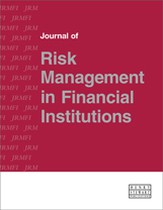Debunking the securitisation myth: Understanding why the 2007 credit crunch happened
Abstract
If the core risk management mantra of financial institutions is ‘no surprises’ the unprecedented, broad-scale write-downs resulting from the 2007 credit crunch represent a systematic failure of institutional risk governance. The co-incidental backdrop to the crisis was: first, a hyperbolic US real estate market, and secondly, an abundance of international liquidity. Paradigmatic shifting technological innovation and financial engineering techniques provided the fission physics for the former to meet the latter in the form of a securitisation market. Securitisation is the banks' platform to on-sell loan risk to investors. In reality, the 2007 credit crunch was a consequence of bank risk originators retaining both explicit and implicit exposure to high octane risk. In the following discussion the author examines the various forms by which banks retained outsized exposures to the US sub-prime market which ultimately resulted in billions of dollars of surprises across financial institutions.
The full article is available to subscribers to the journal.
Author's Biography
Richard Wise was educated at Cambridge University, graduating with a double first in mathematics in 1990. He worked at the regulatory forbearer of the UK Financial Services Authority, the Securities and Futures Authority, as a risk analyst before joining JP Morgan Chase in 1995. He has worked in various roles at JP Morgan including being an interest rate derivative trader in the London office prior to relocating to Japan. He has spent the last seven years in Japan building the market risk management function for Asia-Pacific. He is now in a global role heading risk management for the institutional equities business of JP Morgan.
Citation
Wise, Richard (2008, June 1). Debunking the securitisation myth: Understanding why the 2007 credit crunch happened. In the Journal of Risk Management in Financial Institutions, Volume 1, Issue 3. https://doi.org/10.69554/FPBK4883.Publications LLP
